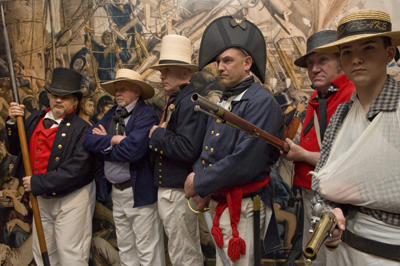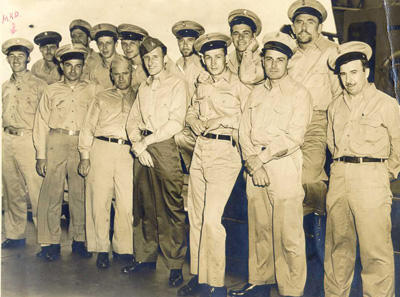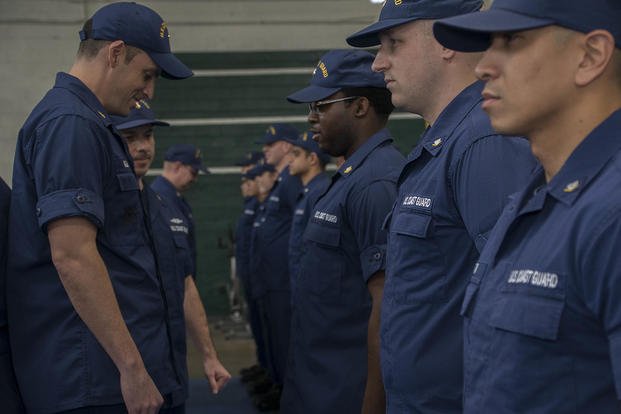The history of the Coast Guard dates to 1790 with the founding of the Revenue Cutter Service. In the early days of its existence, members of the Revenue Service had little cohesiveness among their uniforms. Most clothing items either were adopted from Navy vessel standards or chosen simply out of convenience for life on a ship.
Unfortunately, much of the early history of the Revenue Cutter Service was lost due to British forces setting fire to U.S. government buildings in 1814, and an unrelated fire in 1833. Historians know that the uniforms worn by members of the Continental Navy featured blue coats with red lapels and a tri-cornered hat. Trousers commonly were rolled up to work on ship decks, and black neckerchiefs were allowed to wipe away sweat. Further blurring the distinction between Navy and Revenue Cutter Service uniform customs, naval officers were allowed to take up positions in the Revenue Cutter Service while not actively serving in their original function. Many who did this would not relinquish their old uniforms.

The U.S. Coast Guard didn't exist in its current form until 1915 when the Revenue Cutter Service and Life-Saving Service formed a single organization. Uniform traditions didn't change much until the 1920s when the Coast Guard began to differentiate itself with uniform characteristics like double-breasted coats and white duck hats. Shoulder straps no longer were worn, and rank designations were moved to lower sleeves.
Around the same time, Coast Guard aviation became a distinct function and required new uniforms. The working uniform for Coast Guard aviators was colored khaki during the summer and forest green during the winter. For headgear, aviators were allowed the use of a folding flying cap.

One of the biggest changes to Coast Guard uniform policy came in the 1940s with the official adoption of Navy standards. Both branches used the same clothing, and distinction between uniforms was minor. The Coast Guard maintained unique features in corps devices, buttons, shoulder marks and a few other uniform elements.
In 1967, the Coast Guard was transferred from the Department of the Treasury to the Department of Transportation. Along with the transition came an end to the near-total likeness to Navy uniforms. It was at this time that the modern, recognizable lighter blue uniform became available. Furthermore, the red and blue "racing stripe" that is featured on numerous Coast Guard vessels also made an appearance on Coast Guard ties for certain dress uniforms.

The modern Coast Guard uniform represents a break from many traditions in the name of comfort and utility. No longer are iconic sailor uniforms of old used by the Coast Guard. The change was due in part to a long-seeded desire within the Coast Guard to distinguish itself from the U.S. Navy. Furthermore, the Coast Guard wished to keep its uniforms representative of modern culture.
Want to Know More About the Coast Guard?
Be sure to get the latest news about the Coast Guard, as well as critical info about how to join and all the benefits of service. Subscribe to Military.com and receive customized updates delivered straight to your inbox.












